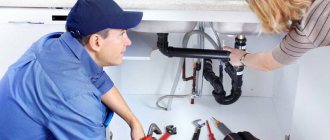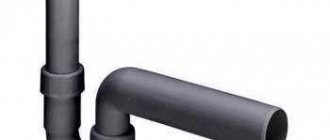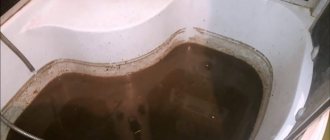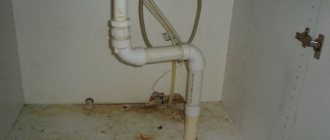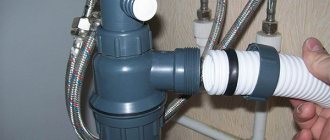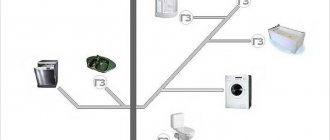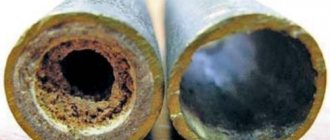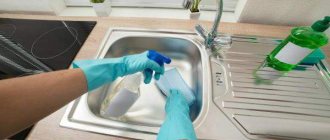Methods of prevention and elimination
We have pipes in our apartment, including a riser in a separate closet. We had a stink, as we found out it was the cast iron riser that stank, then we looked more closely and found a hole. (We are also on the top floor). They replaced the riser. Now there is no smell in the closet. but there is a stench in the toilet. I hope that everything will work out for you! Redoing it again is difficult and expensive. I understand you, only after the repair yourself.
Using a specially shaped neck of the container, the cleaning liquid can be conveniently poured under the rim. The product flows steadily down the bowl. A little liquid is poured directly into the drain.
The tank must be of sufficient size so that the flushed water is sufficient to completely remove fecal and other waste. The drainage mechanism must be adjusted so that the incoming water is sufficient for a thorough flush. Nizhny Novgorod resident Vlad Povelikin is almost at his goal - he is riding a bicycle to Lake Baikal. The traveler left Nizhny Novgorod on June 3...
There are no miracles. There may be a problem with the water or heating pipes. In addition, it is possible that sewer pipes still leak and this happens when the wells overflow due to the low tightness of the joints; after all, these are free-flow sewer pipes with all the ensuing consequences.
Open the tap and let the water run. After a short period of time, the smell of sewage in the bathroom (kitchen) will disappear.
This is the first sign of a malfunctioning sewer system, and simple air fresheners or chemicals will not cope with it. This means we need to find the root cause.
The result of incorrect installation of sewer system elements is the drying out of the water plug, which leads to a sewer smell.
Features of the sewer system of a private house
The sewer system in a private house is local and very sensitive to the slightest changes and deviations in its operation.
The sewer system of a private house has a different design than in a high-rise building, so there are specific reasons for the smell from the pipes
This often leads to the rapid appearance and spread of unpleasant odors throughout the entire area of the house and the question of how to eliminate the smell of sewage. In private houses, the causes of stench can be the same as in an apartment: the presence of sewerage leaks, improper installation of the system, improper operation of the hydraulic valve, clogged pipes, poor ventilation.
But there is one reason that is specific to a private home - problems with the septic tank. The fact is that in a private house, the local sewage system is equipped with a wastewater treatment element (septic tank), in which water settles and is subsequently purified using bacteria. If for some reason the bacteria die, then there is no waste processing and a sewer smell appears, which must be eliminated.
Bacteria can die:
- When using fairly strong household chemicals.
- If pipes and septic tank areas are not properly buried in the soil, they should be below the soil freezing level, which will prevent water from freezing in the sewer system.
- With a long absence of wastewater, and, as a result, lack of food for bacteria. This situation can occur if there are no owners in the house for a long time.
top floor and sewer smell
Violation of the tightness of the system The cause of the appearance of a sewer smell may be a violation of the tightness of the pipe or connections. It should be noted that it is not always possible to quickly detect the location of the leak. Sometimes hidden pipes are installed in the bathroom, which makes it difficult to find the problem. Drainage slowly flows out from the leak and causes mold growth and an unpleasant odor.
Improper installation of sewer pipes. They must be laid strictly with a slope towards the drain. Otherwise, water and liquids will not be able to flow through the sewer at the required speed, which will lead to the formation of stagnant areas with accumulating liquid.
In order to eliminate the leak, you have to resort to replacing the pipe or sealing the damaged area. If a small fistula or crack is found in a cast iron pipe, but it is not possible to change it, then the damaged area can be covered with cement mortar made from water and cement without adding sand.
The gases emitted by a person in the toilet room must escape somewhere, and if the ventilation in the toilet is faulty, then they have nowhere to go. To prevent such a smell from spreading throughout all rooms, the toilet room must have a working exhaust hood and at the same time, natural air renewal through the door must be organized.
Today at about seven in the morning an accident occurred on Lenin Avenue. An Uber taxi driver driving a Nissan Almera, according to preliminary information...
But I repeat once again, without disassembling the communication cabinet you will most likely not be able to find the cause of the stench.
Clogged siphons can also cause a stench. Hair, grease, and soap particles can accumulate in the knee.
In winter, the cross-section of the ventilation pipe of the sewer riser can actually become completely covered with a “circle” from the inside - then odors from the sewer will enter the apartment through all the leaks and water seals. If there is still a crack in the pipe, it can be sealed with something.
A common cause of sewer smell is improper operation of the ventilation system. For example, if the drain pipe is blocked, then the operation of the water seals is disrupted. Therefore, when a significant amount of water is discharged (for example, when flushing a toilet), a vacuum is formed, causing water to escape from the siphons.
And to prevent such unpleasant situations, preventive measures are used:
- monitor the waterproofing of walls and floors;
- use a minimum of joints when installing pipelines;
- pipe connections are made accessible;
- purchase good quality pipes and plumbing fixtures.
Solutions to the problem
How to eliminate sewer odor in the bathroom and toilet
An aerosol air freshener does not remove, but only levels out the sewer odor, and you can get rid of it forever only by removing the cause of its occurrence. There are several available ways to eliminate the unpleasant odor coming from the sewer into the apartment. First, you need to conduct a thorough inspection of all drain pipes in the bathroom and kitchen to make sure there are no leaks from the connections or cracks - through them not only water, but also the smell from the system enters the apartment.
Additional Information. You can check the pipes and their connections by placing toilet paper under them - drops of water will show where to look for a defect.
If any are found, you can coat the joints with silicone sealant, and wrap the cracks with sealing self-adhesive tape.
Important! You can start using the sewer only when the applied sealant is completely dry.
There is a proven method for repairing a loose connection between cast iron pipes or connecting such a pipe with a plastic one. Having cleaned the junction of the pipes, use a wide screwdriver to fill the gap between them with several layers of plumbing linen winding, then rub a mixture of water, cement and PVA glue into it. After about a day, the system can be used again; this connection will last for many years.
If it was not possible to eliminate the leaks on your own, then you will need to call a plumber - if it is necessary to correct assembly defects by replacing individual elements of the system, it is impossible to do without specific knowledge of plumbing standards and requirements (diameter, length and slope of sewer pipes), special tools and skills in their disassembly/assembly .
Cleaning the collapsible siphon
In cases where water from a sink, bathtub or shower drains slowly due to deposits accumulated in the siphon, they can be removed using a plunger or a chemical agent, and in particularly advanced cases, with a flexible plumbing cable. It’s easier to clean a plastic bottle siphon - just unscrew the removable sump, but a siphon made of a flexible corrugated pipe is not removable, you can’t do it without chemicals or a cable.
Cleaning with a cable
Additional Information. To prevent clogging of siphons and pipes, at least once every six months you should pour liquid drain cleaners into the drains of the kitchen sink, bathtub and shower and then rinse them with a strong stream of hot water from the tap.
The lack of water in the siphon after a long absence from the apartment can be easily corrected by simply opening the water tap - water will fill the siphon in a matter of seconds. In the same simple way, we get rid of the failure of the water seal after a one-time massive drain of liquid. But eliminating the causes that regularly lead to the pulling out of water locks should be dealt with exclusively by water utility workers, since vertical sewer risers are within the scope of their responsibility. Recently, exits to attics and roofs in apartment buildings must be locked; now only representatives of utility services have access to the roof and technical floor. In addition, they have a better chance of getting to the risers in the apartments on the top floor to find out whether the failures of the water seals in the apartments are the result of a reduction in the diameter of the drain pipe or its complete plugging.
Note! Residents’ independent opening of plugs to clean such pipes is not only a violation of the rules for operating common building communications, but can also lead to unpredictable results.
The gaps formed around the pipe in the floor or ceiling after the repair of water risers are easiest to cover with cement mortar or plumbing sealant.
If there are no gaps between floors, the sewer pipes are in order, all siphons are working normally, and the smell comes from the ventilation shaft, then it makes sense to install an air check valve in the ventilation hole instead of a grille. By drawing out odors and moisture from the room, it at the same time will not allow air from the basement or from the neighbors’ bathroom to enter the apartment.
Hood check valve
If the washing machine is not connected to the drain siphon of a washbasin or kitchen sink, but directly into the drain pipe, it is necessary, in addition to the usual hose loop on the back wall of the machine, to make another water seal by bending the hose in a U-shape in the immediate vicinity of the pipe. In this way, you can protect your bathroom or kitchen from the penetration of sewer odor through the washing drum.
Washing machine shutter
The reasons for the appearance of an unpleasant sewer smell in an apartment are varied. To determine their source and eliminate the problem, it is best to contact housing and communal services specialists.
Sewage smell in the toilet in the apartment on the top floor
Do not throw away or wash away foreign objects that may cause a blockage. Its formation is another reason for the unpleasant odor. Identifying a blockage is quite simple. When it forms, water leaves the bowl slowly and not completely after flushing.
This problem can only be solved by completely replacing all pipes. There are no other methods for installing channels at the required angle.
A musty smell in the toilet combined with the stench of the sewer system are signs of a malfunction in the ventilation system. Insufficient ventilation of the bathroom can also lead to health problems and mold on surfaces of the room with high humidity.
It’s hard for me to judge from here, but it looks like the riser pipes are poorly sealed and that’s why the smell appears. You should disassemble the riser casing to find out what's wrong. At the same time, you will get to the inspection and be able to check whether the ventilation part of the riser is clogged.
What to do if there is an unpleasant odor in the bathroom
The pipe system in the house is most often located near bathrooms, bathtubs, and kitchens, which provokes the appearance of such a problem as the smell of sewerage in the bathroom. The first thing that comes to mind is using a wide variety of air fresheners to get rid of sewer odors in the bathroom. As practice shows, this method not only will not help remove harmful fumes, but will also lead to worsening health problems. The root cause may be the lack of tightness of the attached sinks, sinks, and other plumbing fixtures. There may also be leaks at the sewer pipe connections. The appearance of odors from the bathroom sewer due to leaks is difficult to eliminate if the pipes are embedded in the walls or floor. Invisible leaks may appear if plastic pipes are installed.
Particular attention should be paid to siphons - they are the most common cause of stench. They must contain water. If the siphon has not been used for a long time, then the water in it could have dried out; if there are problems with pressure, it has simply left the siphon. The design of the siphon itself can trap various small objects that, due to the negligence of the house owner, can get there. However, the decomposition of these items over time can cause an unpleasant odor.
Helpful advice! Using a fine mesh in the sink and bathtub, which will trap various debris, will help eliminate sewer odors both in the bathroom and in the kitchen.
You can buy such a mesh at any hardware store; there are even sink models that come with them upon purchase.
Food residues in pipes often cause blockages, so be sure to have a screen in your kitchen sink.
Why does the toilet smell like sewage?
I described possible methods for solving the problem two years ago. I can only add that as a result of the above reasons, water can be washed out of the water seal of the drain when flushing the toilet. If this is the case and there is no way to eliminate the cause (it is advisable to at least call a plumber and clean the sewer riser), then pour water into the drain after each flush of the toilet. All of the above remedies superficially and temporarily solve the problem of unpleasant sewer odor in the toilet, but they are not able to kill germs, remove dirt and eliminate the cause of the stench.
All this will lead to the appearance of an unpleasant odor in the room. The larger the leak, the stronger the smell. In addition, it is possible that a sewer leak will spill behind the wall cladding. Then you will have to repair more than could be the case.
Nobody can explain anything. The old plumber says that most likely the cast-iron sewer ventilation pipe burst due to frost, frost, and ice (I think it’s called a fan pipe). And the smell penetrates this crack. The entire pipe from me to the outlet on the roof needs to be replaced. The toilet flush is fine.
How to eliminate sewer smell in a toilet: causes and solutions
Next, carefully check the tightness of the connection of the drain pipe from the bathtub and sink to the tee and the toilet outlet to the tee, because it is in these connections that the insulation is most often broken.
Another reason why the toilet smells like sewage is a leaky connection between pipe segments. In this case, correcting the error will cost less than with incorrect design - you just need to replace or coat the pipe joints with sealant. This work is easy to do if the pipeline is made of plastic, and a little more difficult if it is made of cast iron.
PS I had a terrible smell when I just connected the washing machine, without thinking that the water lock needed to be filled. Then he came, smelled it, got it, started rinsing, filled the system and now it seems normal.
The reason why the apartment smells like sewage can be explained very simply - there is a problem with the system. A sign of problems with basement wiring is the presence of odor in apartments on the lower floors and in the entrance. The most common cause is damage to the pipe through which sewage flows into the basement.
How to quickly eliminate odor
The lack of water in the toilet water seal can be detected with the naked eye. To remove an unpleasant odor, simply drain the water, creating a clean water plug. If the water level in the drain remains low, then the problem lies in improper installation (siphon, drain pipe, etc.).
If the problem persists after filling the water seal, then the ventilation and sewer systems should be cleaned. If you suspect a leak, you should inspect the joints and then wrap them with toilet paper. A change in the color of the adsorbent will indicate a depressurized connection.
If home measures have no effect, it is necessary to call specialists who will determine the area of the leak or improper installation of pipes . To search for damage, special devices are used: thermal imagers, acoustic leak detectors, etc.
If the smell is due to the presence of a hidden sewer leak, then the owners will have to dismantle the cladding and part of the ceiling.
Improved ventilation draft
Cleaning the ventilation duct is performed in the following sequence:
- Remove the decorative grille. Clean it from dust, dirt and cobwebs, rinse thoroughly.
- Wear gloves and sweep out small and large debris from the ventilation duct.
- Clean the canal deeply with a dry and clean toilet brush. Vacuum the remaining dust and cobwebs with a pipe without attachments.
- Clean the canal walls from dirt using a damp sponge and scraper. Detergents and chemical solvents are not recommended.
- Reinstall the clean decorative grille. Check the ventilation draft.
- For more thorough cleaning, you can use a flexible shaft and a stiff brush, the diameter of which is approximately equal to the width of the ventilation duct. The structure of the shaft and brush is put on the drill, which rotates at low speeds. Before starting work, it is recommended to mark the height of the floor with the ceiling on the cable. When the end of the brush hits a solid obstacle and the mark reaches the exit of the channel, the shaft can be removed.
Ventilation needs to be improved.
If there is no draft even after cleaning, then the problem may occur in several apartments or on all floors. To “break through” a ventilation duct in a common building system, you need to call specialists from the management company or the housing office.
Home methods for cleaning pipes
If an obstacle occurs in the pipeline, the water in the water seals is not renewed, and the incoming waste begins to decompose and emit a stench.
You can get rid of the blockage using the following means:
- Table salt and soda. The method is only suitable for preventing blockages and gently cleaning the walls of the sewer. You need to pour 150-200 g of salt and soda into the drain, add hot water and leave for 2-3 hours. The product is used to clean sink drains. More effective chemicals are required to dissolve hair and impurities.
- Vinegar and soda. The problem may arise not in the bathroom system, but in the apartment’s general sewer system. In this case, the likely cause of the blockage is fatty deposits. They are effectively eliminated with a combination of vinegar, baking soda and hot water. To clean the pipe, you need to remove the metal mesh from the drain hole, pour 100-150 g of soda into it and pour in 200-250 ml of vinegar (6%). After this, close the drain with a stopper and wait 2-4 hours. The last step of the procedure is pouring 1-1.5 liters of boiling water. The cleaned drain is washed with running water.
- Soda and plunger. The combination of home remedies and mechanical action allows you to do without strong chemicals. First you need to pour 1 liter of boiling water into the pipe, wait 10-15 minutes and use a plunger. If it was not possible to break through the blockage, you need to pour 150-200 g of soda into the drain, pour 1 liter of boiling water, wait and use the plunger again. The procedure can be repeated 2-3 times.
- Plumbing cable. A flexible steel rope with a hook attachment is suitable for removing dense blockages and large debris. To clean the drain, it is screwed in and pushed into the pipe until the obstruction disappears. It is not recommended to pierce corrugated connections with a cable, because a sharp nozzle can tear thin walls.
- Chemical reagents. Tornado, Bagi Potchan and Mr granules are used to remove blockages. Muscle, Chirton powder, liquid Mole, DEBOUCHER Active and Synergetic, Sanfor, Chistin, Tiret and Sanox gels. Some products (for example, Tiret) are not intended for cleaning toilet drains. Reagents are poured or poured into the drain hole. After 5-15 minutes of action, the sewer is washed with hot water.
For thorough cleaning, it is recommended to remove the corrugation or disassemble the siphon. Flushing the pipeline section will remove grease, dirt and organic waste from the walls.
Sealing joints
To ensure tightness, it is necessary to promptly change the rubber gaskets and treat the joints with plumbing sealants. The most common type of sealant is polymer paste. Based on their composition, pastes are divided into silicone, silicone-acrylic, acrylic, polyurethane and bitumen.
The most reliable products are produced by Tytan, Ceresit, Ciki Fix, S 400, Krass, Dow Corning, Belinka and Moment.
Sealing is performed as follows:
- Both joint surfaces are washed from dust and dirt, cleaned and degreased.
- The sealant is applied to one of the surfaces in a circle in a continuous seam.
- The composition is kept in air if the exposure is provided for in the instructions.
- The elements are overlapped, the connection is left for 8-10 hours for complete polymerization.
Instead of sealing paste, you can use a shrink sleeve or plumber's tape. The polymer tape is overlapped with a margin of 0.5 width.
To repair pipe damage, repair clamps and patches made of bitumen mastic are used. If the corrugation breaks, patches are not applied, because Replacing this element is cheaper and more reliable than repairing. The joint between the new part and the toilet bowl is treated with sealant, and the edge of the corrugation with a sealing ring is installed in the sewer outlet.
After polymerization of plumbing glue, it is recommended to check the tightness of the connections. To do this, you need to pour 10-15 liters of water into the sewer, monitoring for leaks at the treated joints.
Similar articles
Proven methods for cleaning acrylic surfaces from various contaminants
Rules for cleaning and caring for bathroom faucets
How to clean tiles from grout and glue
Unpleasant odor in the bathroom or toilet. causes, how to get rid of it
I’ll wait and listen. We have a smell in the kitchen from the sink (the toilet has its own riser and there’s never been a smell there))) I called the plumbers, they seem to have cleaned these drain pipes, the smell has become less, but there is still a faint smell. In the summer, yes, this didn’t happen, so it’s still not in our shell?
In addition to the fact that you will need to purchase additional building materials, which in itself is quite an expensive undertaking, you may need to dismantle and subsequently install sewer elements, which are often located in hard-to-reach places.
The most common errors and how to fix them:
- Too narrow pipes. The pipe must not be completely blocked with wastewater, otherwise increased pressure will form in the pipeline, which will lead to the failure of the water seal. Its signs are gurgling and the appearance of bubbles in the water in the drain hole. It will be necessary to dismantle pipes of insufficient diameter and replace them with those that meet the standards.
- Violation of the pipe position. More often the problem occurs in a private home. The pipeline must be located on a slope, this is necessary for the normal movement of wastewater. If the inclination angle is chosen incorrectly, you will have to disassemble the pipeline and reinstall it, observing the required inclination.
At first they were gutters filled with waste, and then they turned into almost sealed systems, as in the photo, which do not cause their owners much trouble. But periodically, wastewater treatment structures become faulty.
Why does the toilet smell, causes of sewer smell
It happens that residents of a multi-storey building suffer from the smell of sewage. At the same time, it is not possible to get rid of the problem with the help of air fresheners. To eliminate an unpleasant odor, it is necessary to identify the cause of its occurrence. After this, it will be possible to take the necessary measures to solve the problem. Often you can cope with this task on your own.
A lot of money has been invested. Maybe someone can advise. By the way, we don’t have a ventilation duct in the toilet. There are just holes in the wall that go into the bathtub, and from the bathtub they go into the hood and onto the street...
Thank you. Then it turned out that we still had cast iron sewerage on the 1st floor, and plastic on the upper floors. The previous owners refused to change it. Could this have an impact? Plumbers don’t want to clean the exhaust ventilation; they say it doesn’t affect it. But I'm afraid that with the extra. the non-return valve will cause a smell in the apartment, because... it already exists when draining water from the upper floors. Should it be installed on the 1st and 2nd floors?
A loose connection of pipeline elements is easy to fix: the joints of cast iron pipes need to be re-caulked, and sealing collars must be installed at the joints of plastic pipes.
More often this happens when not special clamps are used to secure the knee, but electrical tape or regular tape. For country houses and dachas, special products are used to care for country toilets and cesspools.
Ventilation problems as a cause of inconvenience
You can suspect that the reason for the penetration of sewer odors into the apartment is ventilation if such odors appear periodically. Typically, ventilation in houses operates on natural draft. Ventilation may either work ineffectively or be completely absent. If there is no ventilation, fungi and mold can form on the inner walls of the pipes, creating an unpleasant odor. The issue of lack of ventilation can be solved in two ways:
- cleaning the riser if its upper part is clogged with various debris (or frozen ice in winter);
- installing a special fan that will force air circulation.
It is also necessary to periodically check on your own whether the ventilation is working. To do this, you will need a sheet of paper that needs to be attached to the ventilation pipe. The leaf should not fall, but should hold up on its own, indicating that there is air flow. If you need to contact a specialist for help, he can measure the air flow speed with a device.
Important! The ventilation system must work without fail! It is better to contact a specialized organization to resolve the issue, since the rules prohibit non-specialists from private access to the engineering system of the house.
